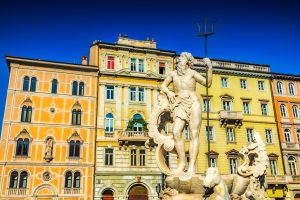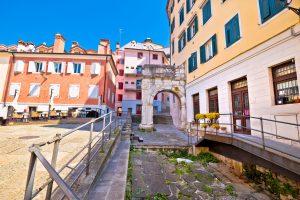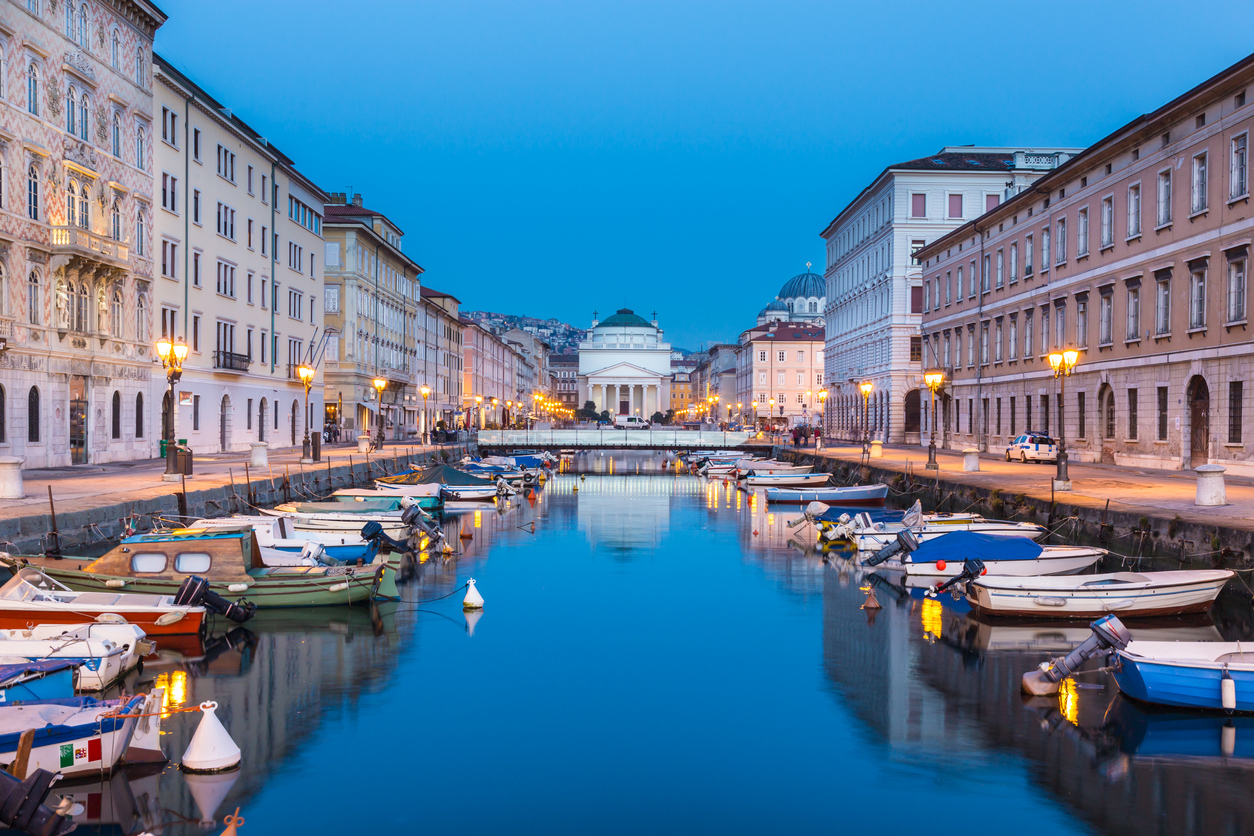I spent last winter in Trieste, Italy–the city where I lived for part of my childhood and where I attended grade school.
Trieste is located on the Adriatic Sea, a little over 100 miles east of Venice, on the border with Slovenia. It has a population of approximately 240,000 inhabitants in the city proper and a total of 410,000, including the metropolitan area. Almost 30 percent of the population is comprised of senior citizens: nearly 8 percent of its residents are foreign born–mostly Slovene and Eastern Europeans who speak their language along with Italian, and the Triestine dialect, which is derived from the Venetian dialect.

The city dates back to 33 A.D., when it was part of the Roman empire. It was controlled by many nations over the years, and spent over a century as part of the Austro-Hungarian Empire, under the Hapsburgs. This is reflected in its architecture and cuisine. After WWI, it became part of Italy.
Make the pledge and become a member of Italian Sons and Daughters of America today!
It is not a city often visited by American tourists, although there are ones who are drawn to it. It’s historical attractions consist of the remains of a Roman forum and Roman market, the Castle of San Guisto, which now houses a museum featuring, among other things, Etruscan relics. In the center of the city, there are also the remains of an arch (Arco di Riccardo) that dates back to the first century.

West of the city, at the end of the promenade along the beach, you’ll find the Castle of Miramare, which was inhabited by Archduke Maximillian and his wife Carlotta during the Hapsburgs. It has remained as it was 100 years ago and is a popular tourist attraction.

The most unique appeal of Trieste is its main square — Piazza Unita d’ Italian — which faces the sea and is surrounded by impressive Viennese-style buildings. It is considered one of the most beautiful squares in Europe. There is always a charming canal surrounded by coffee shops and restaurants.

Trieste is deemed the coffee capital of Europe. I counted over 50 cafes just in the downtown area, some of which date back to 1800 and were frequented by many artists and literati. The most famous was James Joyce, who wrote Ulysses while residing there. There is a bronze statue of him on one of the bridges crossing the canal.

The city boasts a dozen museums, most of which are free one Sunday per month, and inexpensive to visit on other days. They also have six theaters around the city–some small local theaters and other more important ones similar to the Benedum and the O’Reilly in Pittsburgh. The cost of the performances was relatively low.

The cuisine of Trieste is a combination of Italian, Austrian and Eastern European: lots of seafood, pork dishes, stews, risotto, fresh vegetables and delicious pastries.
The winter styles in Trieste, as in most of the northern cities I visited, consisted of neat, well-fitting clothes, comfortable — usually expensive — shoes, wool sweaters, puffy jackets and scarves. Everyone, male of female, wears neck scarves. I spotted a few fur coats on older ladies during the days where the temperature dipped below freezing, but not many. The only sweatsuits in downtown Trieste were worn by American tourists.

I have learned many things about the Italian way of life while spending the winter in Trieste–some good, and some not so good.
To be continued. Look for part 2 of the Trieste travel series in September.
This article first appeared in La Nostra Voce, ISDA’s 28-page monthly newspaper, which chronicles Italian life, culture and traditions. Make the ISDA pledge and subscribe today.


